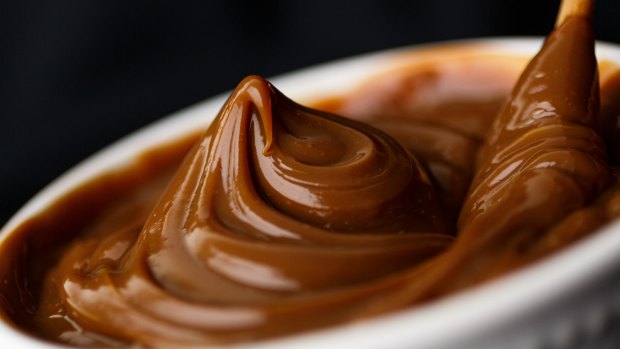This was published 1 year ago
The origins of dulce de leche: The sweet treat that caused an international incident

Dulce de leche's history is fraught, with several South American countries claiming its origin.Credit: iStock
Manjar in Chile, arequipe in Colombia, dolce de leite in Brazil, dulce de leche in Argentina; caramelised milk by any other name tastes just as sweet. As a child I assumed this nectar of the gods originated in my mother's kitchen. She'd boil an unopened tin of condensed milk in a great pot of water until it turned to caramel. We'd eat the occasional treat sandwiched between home-made meringues or dolloped in bowls and splashed with evaporated milk. Decades later, my four siblings and I remain loyally addicted to our favourite childhood pudding.
Only on my first visit to South America did it dawn on me that others had made the same culinary discovery. Pots of dulce de leche – literally "sweet from milk" – appeared at every Argentinian breakfast table. People casually smeared it on crepes. They gobbled it in alfajores (shortbread biscuits) for afternoon tea, and devoured it in post-prandial torta rogel (a delectable millefeuille). Did Argentinians realise they were living in the not-so-proverbial land of milk and honey?
In fact dulce de leche's history is fraught. In 2003 Argentina attempted to declare it – along with those other South American marvels, asado and empanadas – a national patrimony. Uruguay objected. Countries across South and Central America also had a case; dulce de leche is, after all, a pan-national treasure. Its precise origins are vague: some reports say it appeared in Indonesia in the 6th century before finding its way to the Philippines, Spain and finally the Americas. Apocrypha suggests a cook – working either for Napoleon or Argentinian politician Juan Manuel de Rosa, depending who you believe – invented the sticky melange after over-boiling a pot of sugared milk.
The important thing, of course, is that it exists, and we can enjoy it in all its manifold glory: made with curdled milk in Cuba, goat's milk in Mexico and – rumour has it – the occasional dash of cannabis in Chile. The visitor's first port of call is the breakfast buffet; select your accompaniment for the spread – crepes or local breads – or devour it neat from the pot as I'm inclined to do. Then head to a neighbourhood supermarket, where you'll find it stacked in rows many tubs deep. Grab a cuchufli (dulce de leche-stuffed, cigar-shaped biscuit) from a street vendor. Order a dulce de leche-impregnated ice-cream. At dinner, scour restaurant menus for desserts made with this delicacy.
Back home, celebrate International Dulce de Leche Day every October 11. Visit Gelato Messina for their sublime super dulce de leche gelato. Make your own nectar of the gods by simmering milk and sugar over a low heat, or boiling an unopened tin of condensed milk in a full pot of water for around three hours. Keep a close watch: the tin will explode if the water runs dry, and you'll be licking caramel off the ceiling as my siblings and I were once obliged to do.
See also: Imposters: These 10 tasty dishes aren't from where you think
See also: 'So good, I cried': Australia's top chefs name their best-ever overseas meals
Sign up for the Traveller Deals newsletter
Get exclusive travel deals delivered straight to your inbox. Sign up now.